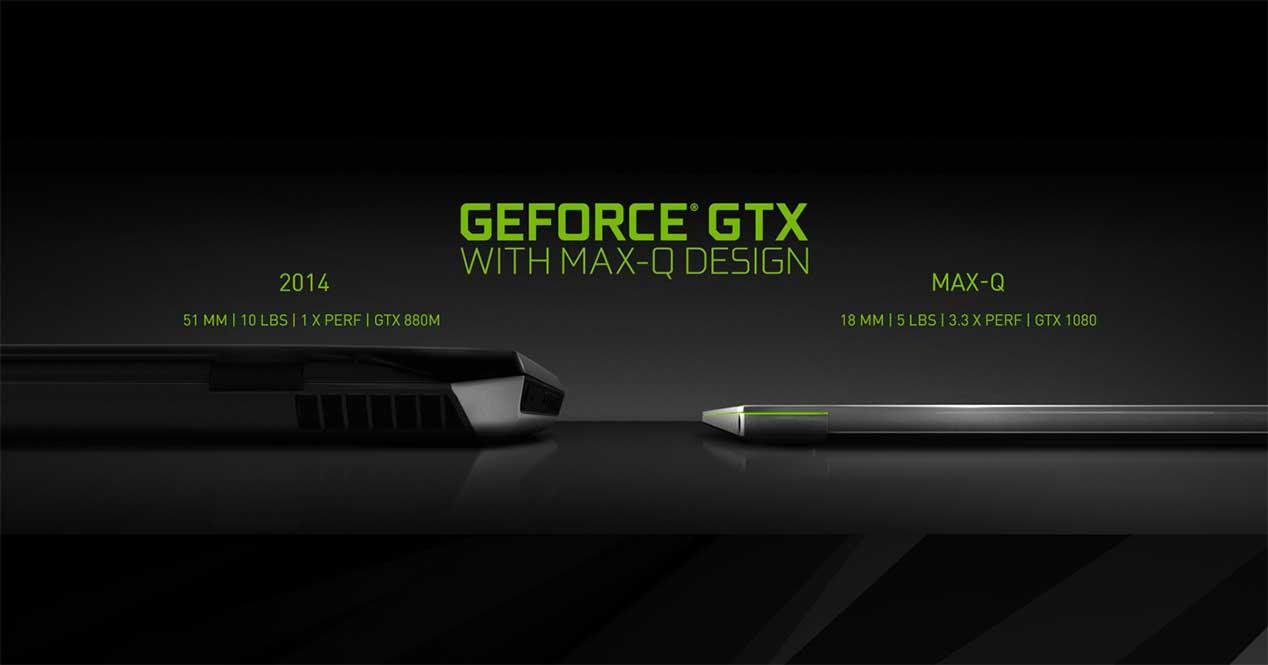It’s been two generations of Max-Q graphics cards and now we have to say goodbye for some pretty weird reasons from NVIDIA. As we have already covered in the corresponding news, we will present other reasons (perhaps more precise) for making the decision.
NVIDIA Drops Max-Q Portable GPUs
Why not stick with the Max-Q and Max-P line of graphics cards at the same time? Especially when two ranges of performance and price are perfectly segmented, giving more users the flexibility to choose.
The first reason has precisely to do with performance and secondly with the manufacturers, who have curiously reworked these GPUs. As we are well aware, the Max-Q models were designed to offer lower fuel consumption than the Max-P, so that the TGP
This was done so that thinner and more stylish laptops could have an NVIDIA gaming GPU without compromising too much on equipment cooling and instead the buyer would get good performance in their games.
But over time, AIBs realized that these capped GPUs had great potential for optimizing TFLOP per watt consumed, as NVIDIA had better BIOS SKUs to improve their efficiency. Therefore, increasing the frequencies with lower voltages made it possible to gain in performance and even to overtake a Max-P model without problems, with a similar consumption and without generating more heat than its higher model, but for a lower price.
What was the point of buying a laptop model with GPU Max-P whether some models with Max-Q worked the same or better? It didn’t make sense, so NVIDIA decided to cut its losses …
Simplifying models is always a good option for the consumer, or maybe not?
The second reason would be somewhat controversial, if not extremely controversial. By removing the Max-Q models, only the Max-P models remain, that is, the models without a slogan, like the RTX 3070 Mobile to dry and not the RTX 3070 Max-Q
But as the Max-P models are now going to be segmented by speed, NVIDIA has really reduced the number of GPUs by name, but made it stand out in a single series by speeds.
So much so that there will be, at least initially, up to 38 GPU models encompassed from the RTX 3060 to the RTX 3080, which does not make sense from a practical point of view, and even less if as you see it no They specify the characteristics on the gearbox to be able to distinguish each speed.
Faster production speed, lower costs, less quality checks, more models on the market
NVIDIA released Max-Q and Max-P as standards for manufacturers and for their own chips, but while that was wonderful at identifying models, it was actually wasting the overall time and money. sector, including them.
The Max-Q models have been limited in terms of maximum sound volume for almost two years, although eventually a large number of laptops passed the sound test, the reality is that at home they have exceeded the thresholds, in some cases a lot. Therefore, the test ISO-7779 It was of little value as such, because although the maximum thickness was set, although the voltage ranges were minimal, the tests were ultimately skipped without too much trouble and costing time and money. , because every laptop had to be tested.
Therefore, setting specific frequencies for a single model and segmenting them as the manufacturer wants is something that is part of it and needs to be specified, because now with the Max-P models they have more freedom of configuration and TGP. , as well as noise or chassis design tolerances.
There is no doubt that this topic will be exciting to deal with based on the experiences and problems faced by users, since access is not facilitated, manufacturers have the freedom to make and break policy with their models. names and segments.









